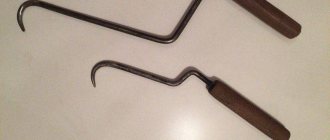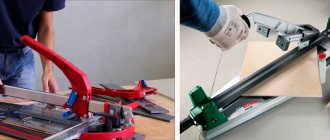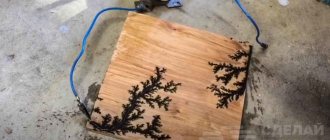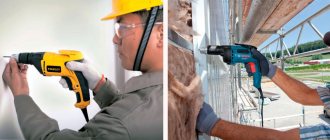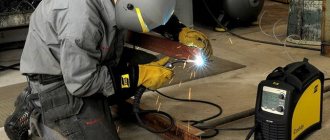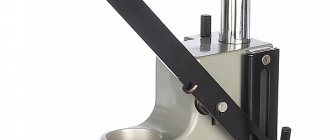Increased strength characteristics of reinforced concrete products and building structures are achieved through the use of frames and gratings made of steel reinforcement. Metal rods are connected by welding or fixed with annealed wire. Builders prefer the second method, which has a range of advantages. Professionals use a gun to tie reinforcement. It facilitates the process of fixing steel bars and reduces the duration of construction work. Let us dwell in detail on the equipment used and knitting technology.
Tying reinforcement is the optimal method of fixing reinforcement cage bars
Building structures and products made of reinforced concrete are characterized by increased reliability and a long service life. The concrete mass retains its integrity under the influence of compressive loads and has an increased margin of safety due to the reinforcement frame. The spatial structure of reinforcing bars dampens tensile forces and torques, evenly distributing loads within the array. The frame prevents cracking provided that the reinforcing bars are securely fixed.
Reinforcement of structures on a construction site occurs, as a rule, using individual reinforcement bars
They are connected using various methods:
- using a welding machine designed for contact or arc welding. When spot welding, rods with a diameter of up to 2.4 cm are used, and electric arc welding allows you to fix rods of increased diameter. The electric welding method of fixing reinforcing bars allows you to quickly connect the joints of the rods. However, despite these advantages, the welding method has disadvantages. The main disadvantage is the disruption of the metal structure when heated, which negatively affects the properties of the material and the strength of the frame under load. In addition, welding zones are susceptible to corrosion, which reduces the reliability of the connection and shortens the service life. The increased rigidity of welded joints complicates the process of shrinkage and thermal deformation, increasing the likelihood of crack formation;
- using fixing clamps made of flexible plastic. When fixing reinforcing bars, labor productivity increases, since the joining process is simple - just manually wrap the joint area with a plastic clamp and pull it by the free end. The use of plastic joints significantly reduces the duration of knitting work. However, the technology has weaknesses. Elastic, at positive temperatures, plastic becomes brittle and loses strength in winter. As a result, the fixation strength of individual zones of the frame decreases, and the likelihood of violating the integrity of the clamps when workers move along the reinforcement frame increases. In addition, under the influence of loads created by vibrators for compacting concrete, the clamps weaken and burst;
- using a knitting gun that feeds the wire. The method of fastening the joint sections of the frame with annealed wire is simple, ensures reliable connection and a long period of operation of metal structures. When using a gun, labor productivity increases significantly compared to the manual knitting method using a crochet hook or semi-automatic device. The assembly of the reinforcement cage is carried out by connecting the intersections of the reinforcement with a special wire. It has spring properties and provides a limited degree of freedom to the assembled lattice, preserving the integrity of the metal structure. Using a mechanical knitting tool, the rebar knitter quickly assembles the rebar cage.
The rods provide flexibility, allowing any desired frame shape to be assembled on site
Each method of tying reinforcement has its own advantages and disadvantages. But if you need to make a reliable spatial lattice in a limited time, you cannot do without using a knitting gun.
Auto
Automatic rebar tying guns have many electronic components for wire feeding. Power is supplied by a portable battery, which is attached to the handle. A fully charged battery lasts for 6-10 hours of continuous operation. The shelf life of a lithium-ion battery is usually 2-3 years, although aluminum batteries with a longer shelf life (from 5 to 10 years) are widely used on the market today. Many “automatic machines” are equipped with not one, but two buttons:
- The first button is located on the top side of the case, and it is needed to activate the electrical power.
- The second button is located on the front of the handle, and it is used to control the wire feed.
- The format for using the buttons is as follows: to turn on the device, the worker activates the electrical power button, and the button on the handle is used directly to control the wire.
Advantages and disadvantages
Let us first list the advantages of an automatic pistol:
- High wire feed speed. Tying one medium-sized knot requires from 0.5 to 1 second. Thanks to this, installation of reinforcement is carried out quickly, which saves a lot of time on pouring concrete.
- Greater knitting accuracy. Using the device, you can create a high-quality tight knot that will reliably fix reinforcing bars on the site. Using the switch, you can manually control technological features (wire feed format, quality of wire fixation, and so on).
But let's not forget about the disadvantages:
- Higher weight. The battery and electronic components “add” 0.5-1.2 kg of additional weight. Because of this, the quality of management suffers.
- Need to recharge. The battery is designed for 6-10 hours of continuous operation - after this it is necessary to recharge. This factor is especially critical in the case of continuous work in several shifts, when workers need the device for a long period.
- Sensitivity to environmental conditions. Electrical components may fail or rust if exposed to water for long periods of time. Therefore, using an automatic pistol in the rain is not very convenient.
Rules of operation and storage
It is recommended to use an automatic gun for tying reinforcement as follows:
- Charge the electric battery and install the part on the handle. Perform a test run of the device to ensure its functionality.
- Perform markings, prepare reinforcement, carry out installation according to plan. Make sure the rods are flush to the ground and adjust the position if necessary.
- Bring the knitting gun, activate the electrical power using the corresponding button on the top side.
- Press the wire feed button and wait until the wire wraps around the reinforcement several times. After this, the device will automatically tighten the wire. At the end, the device will automatically cut the wire.
- Using the instructions presented in the previous paragraph, create nodes on all the necessary sections of the reinforcement. At the end, carry out inspection work and pour concrete.
The battery is removable. Many manufacturers recommend dismantling the battery after knitting work (that is, it must be stored separately from the device). Manufacturers claim that this increases the shelf life of the battery. However, many builders claim that dismantling the battery has little effect on its shelf life, so in practice this advice is often ignored.
It is recommended to store the knitting gun for reinforcement in a dry, ventilated area away from liquids (not only chemically active substances, but also water are prohibited). In case of transportation, it is recommended to pack the device in cardboard packaging. On the job site, it is recommended to minimize exposure to dust (although the plastic casing protects the device quite well).
Which technology is better - the advantages of knitting for reinforcement
Knitting wire for reinforcement is the optimal solution to ensure the strength of the reinforcement frame. Professionals involved in laying foundations, manufacturing reinforced concrete products and reinforced structures confidently claim that tying reinforcement using a special gun has a set of advantages compared to other methods.
Main advantages:
- increased reliability of fixation of reinforcing bars;
- durability of assembled metal structures;
- accelerated pace of assembly of reinforcement cages.
Thanks to the use of an automatic gun, which ensures improved quality of connections, the technology of fixing rods with wire provides the necessary performance characteristics and the advantages of a knitted connection.
The device is simple to operate, but significantly speeds up the frame manufacturing process
How does a rebar tying gun work?
Regardless of the design of the gun and the manufacturer, all types of automatic knitting tools work on a general principle. Let's look at how the device works and in what sequence the knitting operations are performed.
The reinforcement cage is assembled using a gun in the following order:
- Cut the reinforcement to the required sizes.
- If necessary, level the rods with a hammer.
- Remove dirt and rust spots.
- The skeleton of the reinforcement cage is assembled.
- Bring the knitting tool to the area where the bars intersect.
- Press the start button or start lever.
After the “start” command, the wire for tying the reinforcement is fed automatically. It forms a knot, tightening the joining area of the reinforcement. The degree of tightening is determined by the design of the gun. He trims off the excess tying wire for the reinforcement after tying the frame members together. Depending on the device model, the tightening process takes 1–2 seconds.
Tips for using a knitting gun
Buying or renting this tool is expensive, and in order not to waste money, you need to follow the operating rules.
In the case of this device it is:
- Full charge of the battery, compliance of the wire and reinforcing bars with the parameters and “original” components. It is recommended to be especially careful when using components from Japanese brands; such a tool can easily be broken by using, for example, Chinese wire. Plus, such a breakdown is not included in the warranty agreement.
- It is also recommended to use extensions to form grating units if work is carried out with large horizontal frames. This will make the work much easier.
- Even though the operator can do more work with a knitting gun, an assistant is still needed.
What gun do you use for tying reinforcement?
BatteryMechanical
Knitting gun - device and principle of operation
An industrial knitting tool is a mobile device weighing up to 4.5 kg. It consists of the following main parts:
- housings with mechanisms;
- electric drive devices;
- handles with start button;
- working head;
- cutting machine;
- wire feed mechanism;
- bobbins with wire;
- spool holder.
The high speed of work carried out using a gun allows you to reduce the number of workers and speed up the pouring of monolithic structures.
In a construction tool that fixes reinforcing bars, electrical energy from a household network or battery is converted into mechanical energy.
As a result, the working body rotates, and the following operations are performed:
- Wire is supplied from the drum for tying reinforcement.
- A wire loop is formed at the intersection of the rods.
- Controlled tightening is carried out.
- Automatic wire cutting occurs.
An automatic knitting tool is a complex mechanism. Its repair and maintenance is carried out in service centers.
Top best models
Firecore, 12 V, 1500 mAh
- Plus: high binding speed.
- Cons : none found.
Grost RT 308 C
- Plus: easy knitting of reinforcement.
- Cons: none found.
Egor: “Before using a new coil from the components, I sand it down. After this, the feed goes smoothly, the reel does not bite.”
Firecore, 12 V, 3000 mAh
- Plus: 2 batteries included.
- Cons: Not found.
Gun for knitting reinforcement - types of devices and their characteristics
At critical industrial facilities, reinforcement is produced with the help of professional knitters. The fittings are connected with automatic pistols.
The basis of the design of the gun for tying reinforcement is the electric motor that starts drawing the wire
Various types of tools are used:
- battery gun for tying reinforcement. It provides the ability to operate autonomously in areas where there is no power supply. Stand-alone devices differ in battery power. The length of the wire on the reel is sufficient to perform a shift volume of work;
- mechanical device. It is equipped with a replaceable cassette with binding wire. The diameter depends on the brand of the device and the size of the reinforcing bars. When performing operations to tie the reinforcement of a spatial frame, special training is required.
The construction equipment market offers models of devices made in Japanese, German, Korean, Russian and Chinese.
A professional tool has the following characteristics:
- wire diameter. The wire for a knitting gun has a standard size of 0.8–1.5 mm;
- speed of bonding reinforcement joints. Depending on the model of the knitting device, it takes no more than two seconds to fix the reinforcing bars;
- degree of ergonomics. Convenience of using a professional tool is achieved with the help of retractable handles. Their length reaches 20 cm;
- mass. Depending on the weight of the device, the duration of its continuous use depends.
Pistols differ in battery capacity, level of service, and warranty.
The development of the design of this tool, with the rapid formation of a unit, makes it possible to reduce the time spent on manual labor when installing reinforcement cages
Kinds
Depending on the operating conditions, two types of devices are used:
- Cordless mating gun
Its main advantage is that it can provide uninterrupted work in areas without power supply. This device has a particularly powerful battery, and the length of the wire is enough to work for an entire shift.
- Mechanical mating gun
Usually produced with a replaceable wire cassette included. The characteristics of such a device directly depend on what brand it is and the size of the reinforcing bars. It will be possible to work on the frame with such a gun only after special training.
What are the advantages of a wire tying gun?
The special tool has a set of advantages. Main advantages:
- quality of completed units;
- accelerated pace of work;
- quick replacement of wire cassettes;
- possibility of knitting knots in several layers;
- automatic wire feed;
- guaranteed tightening force;
- extended temperature range of application;
- Possibility of continuous operation of battery models during a shift.
A professional pistol helps to perform increased volumes of work in any weather conditions. A significant plus is the ability to regulate the tightening force and the length of the cut wire. The lack of waste allows for significant savings compared to manual tightening.
Why should you choose such a device?
A professional tool is the key to a high-quality result that will last for many years.
The main advantages of using a knitting gun are:
- High quality wire knots.
- Operative pace of work.
- Easy replacement of wire cassettes.
- Scope of work – 1 person can do the work for a small team.
- Fairly light weight.
- Possibility of knitting multi-layer knots.
- Adjusting the stretch marks makes the frame more durable.
- Pull tightly.
- Continuity of work during the shift due to a powerful battery.
Expert opinion
Torsunov Pavel Maksimovich
Of course, any tool also has its drawbacks. In particular, for a knitting gun this is a high price, the need to spend money on wire cassettes and inconvenience when working in cramped conditions.
What are the disadvantages of the tool used for tying reinforcement?
Along with the advantages, there are a number of disadvantages:
- increased cost of professional equipment;
- additional costs for the purchase of wire cassettes;
- problematic use in cramped conditions;
- the need for special training for knitters.
The time for tying reinforcement using a gun is approximately 1 second.
It is more convenient to tie reinforcement in hard-to-reach areas and corner areas using a manual device.
How to choose automatic pliers for tying reinforcement
When choosing a pistol to perform specific tasks, pay attention to the following points:
- type of tool. It is advisable to use mechanical devices in domestic conditions, battery models are intended for industrial use;
- image of the manufacturer. Products from well-known brands have a warranty, are distinguished by their quality and are serviced in certified service centers;
- operator reviews. Builders who specialize in assembling reinforcement structures will help you make the right decision.
When purchasing a pistol, also listen to the recommendations of the sales consultant.
Good quality of knitting of rods, uniform tightening force
What kind of wire is used for knitting reinforcement?
Depending on the diameter of the rod being knitted, what wire to knit the reinforcement with is determined by specialists.
The relationship between the diameter of the annealed wire, the number of turns and the sizes of steel rods is as follows:
- reinforcement with a diameter increased to 6.8 cm is tied with a single wire. Its cross-sectional size is 1.5 mm;
- steel rods with a cross section of 0.4–2.8 cm are securely fixed using double wire, the diameter is 0.8 mm;
- reinforcing bars with a diameter of 0.4–4 cm are connected with wire with a diameter of 0.8 mm, it is twisted in three turns.
Each type of knitting tool corresponds to a wire of a certain diameter.
Tying reinforcement using a professional tool - user reviews
Reinforcement knitters who use guns in their daily work speak positively about their characteristics:
- increased productivity;
- reliability of Japanese, German and Russian instruments;
- Possibility of autonomous use.
When performing work on an industrial scale, an automatic knitting tool is indispensable. When assembling the reinforcement cage yourself, it is advisable to rent a knitting device. The reliability of fixation is determined by the quality of the equipment, as well as the skills in performing binding operations.
